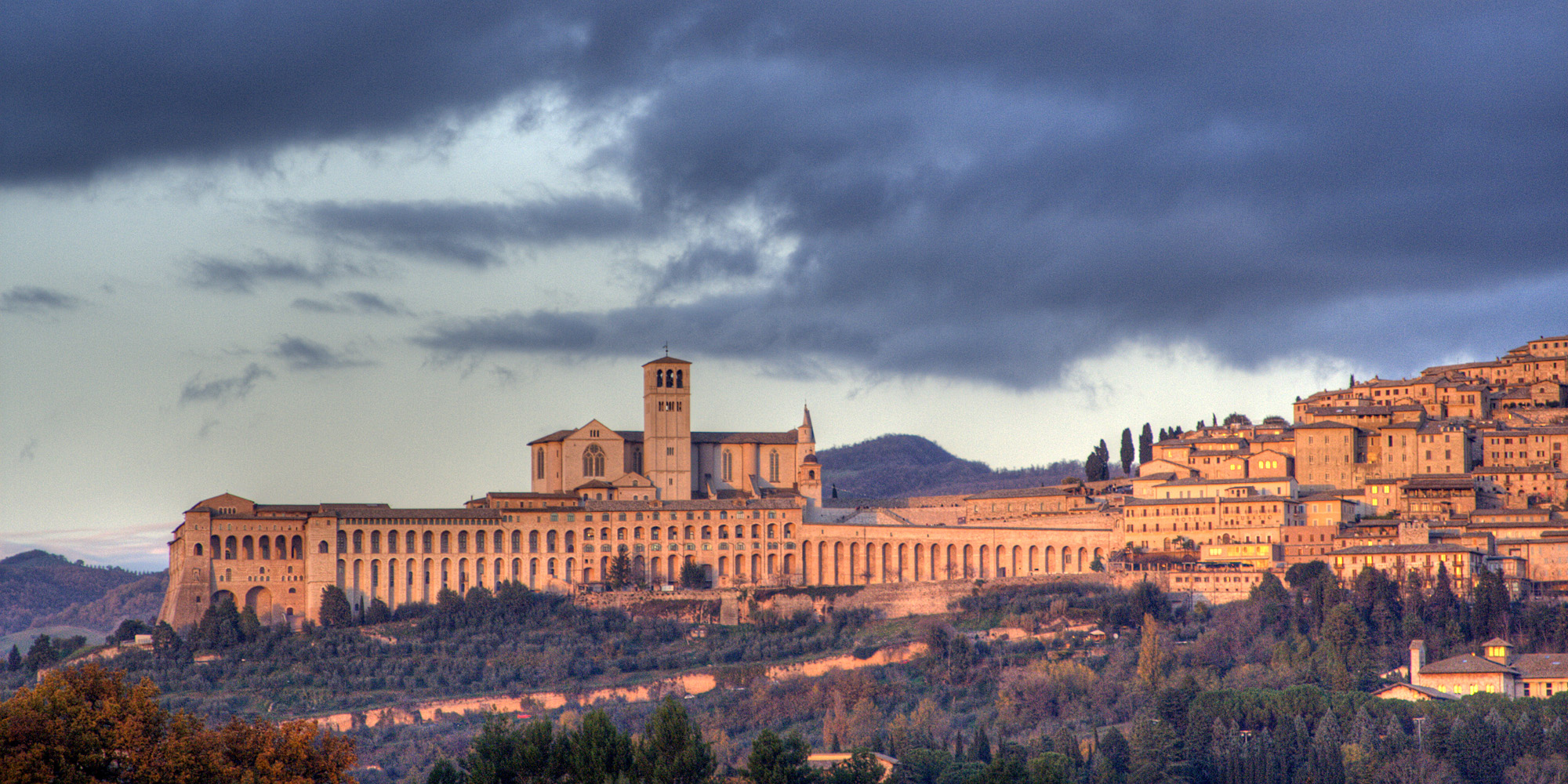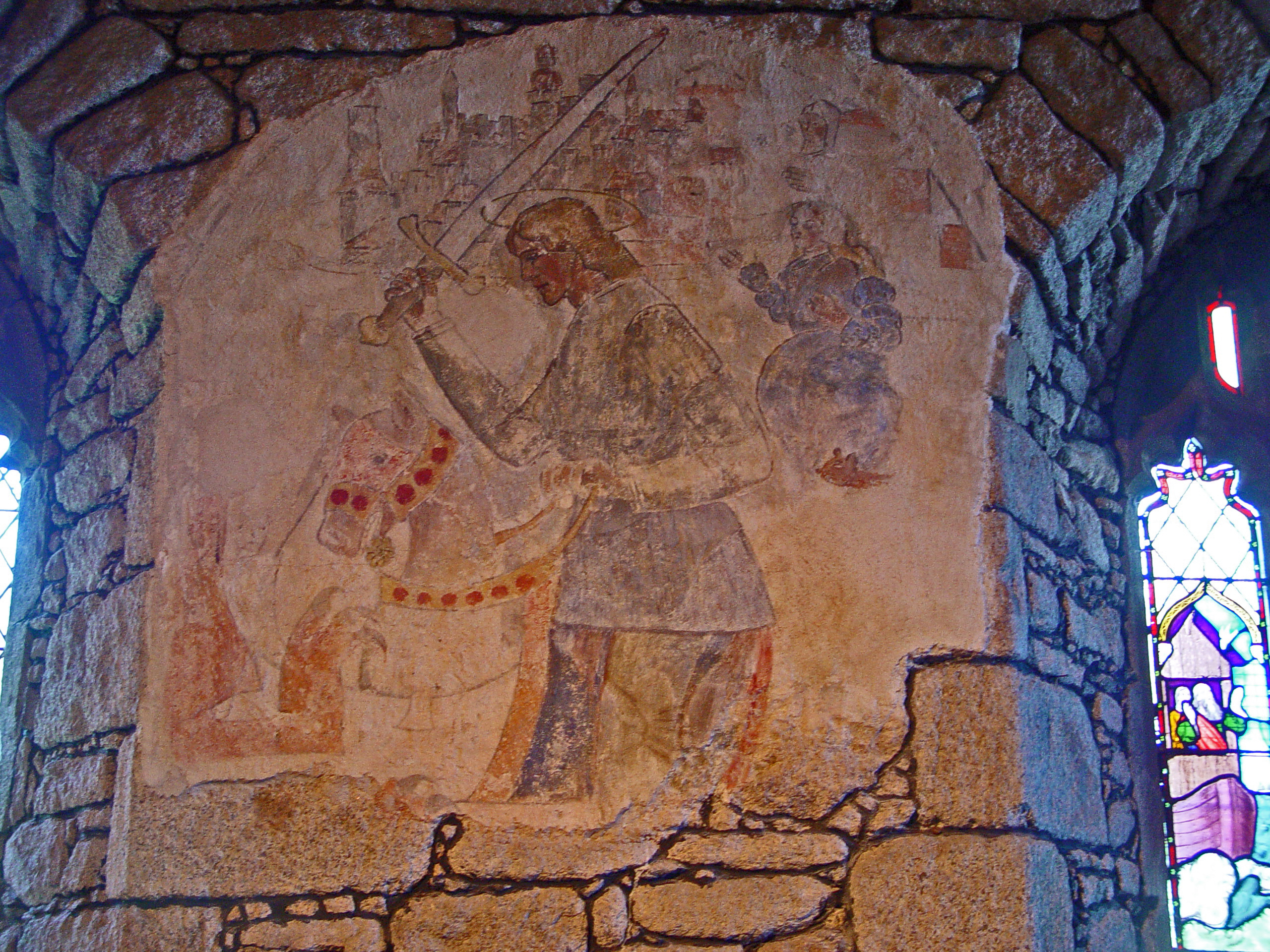|
Fresco
Fresco (plural ''frescos'' or ''frescoes'') is a technique of mural painting executed upon freshly laid ("wet") lime plaster. Water is used as the vehicle for the dry-powder pigment to merge with the plaster, and with the setting of the plaster, the painting becomes an integral part of the wall. The word ''fresco'' ( it, affresco) is derived from the Italian adjective ''fresco'' meaning "fresh", and may thus be contrasted with fresco-secco or secco mural painting techniques, which are applied to dried plaster, to supplement painting in fresco. The fresco technique has been employed since antiquity and is closely associated with Italian Renaissance painting. The word ''fresco'' is commonly and inaccurately used in English to refer to any wall painting regardless of the plaster technology or binding medium. This, in part, contributes to a misconception that the most geographically and temporally common wall painting technology was the painting into wet lime plaster. Even in appare ... [...More Info...] [...Related Items...] OR: [Wikipedia] [Google] [Baidu] |
Buon Fresco
Buon fresco () is a fresco painting technique in which alkaline-resistant pigments, ground in water, are applied to wet plaster. It is distinguished from the fresco-secco (or ''a secco'') and finto fresco techniques, in which paints are applied to dried plaster. Description The buon fresco technique consists of painting with pigment ground in water on a thin layer of wet, fresh, lime mortar or plaster, for which the Italian word is intonaco. Because of the chemical makeup of the plaster, a binder is not required. After a number of hours the plaster reacts with the air in a process called carbonatation. This chemical reaction fixes the pigment particles at the plaster's surface in a protective crystalline mesh known as the lime crust. The advantage of buon fresco is its durability. In '' fresco-secco'', by contrast, the color does not become part of the wall and tends to flake off over time. The chief disadvantage of buon fresco is that it must be done quickly without mistake ... [...More Info...] [...Related Items...] OR: [Wikipedia] [Google] [Baidu] |
Italian Renaissance Painting
Italian Renaissance painting is the painting of the period beginning in the late 13th century and flourishing from the early 15th to late 16th centuries, occurring in the Italian Peninsula, which was at that time divided into many political states, some independent but others controlled by external powers. The painters of Renaissance Italy, although often attached to particular courts and with loyalties to particular towns, nonetheless wandered the length and breadth of Italy, often occupying a diplomatic status and disseminating artistic and philosophical ideas. The city of Florence in Tuscany is renowned as the birthplace of the Renaissance, and in particular of Renaissance painting, although later in the era Rome and Venice assumed increasing importance in painting. A detailed background is given in the companion articles Renaissance art and Renaissance architecture. Italian Renaissance painting is most often divided into four periods: the Proto-Renaissance (1300–1425), the ... [...More Info...] [...Related Items...] OR: [Wikipedia] [Google] [Baidu] |
Giotto Di Bondone - No
Giotto di Bondone (; – January 8, 1337), known mononymously as Giotto ( , ) and Latinised as Giottus, was an Italian painter and architect from Florence during the Late Middle Ages. He worked during the Gothic/Proto-Renaissance period. Giotto's contemporary, the banker and chronicler Giovanni Villani, wrote that Giotto was "the most sovereign master of painting in his time, who drew all his figures and their postures according to nature" and of his publicly recognized "talent and excellence".Bartlett, Kenneth R. (1992). ''The Civilization of the Italian Renaissance''. Toronto: D.C. Heath and Company. (Paperback). p. 37. Giorgio Vasari described Giotto as making a decisive break with the prevalent Byzantine style and as initiating "the great art of painting as we know it today, introducing the technique of drawing accurately from life, which had been neglected for more than two hundred years".Giorgio Vasari, ''Lives of the Artists'', trans. George Bull, Penguin Classics, ... [...More Info...] [...Related Items...] OR: [Wikipedia] [Google] [Baidu] |
Mural
A mural is any piece of graphic artwork that is painted or applied directly to a wall, ceiling or other permanent substrate. Mural techniques include fresco, mosaic, graffiti and marouflage. Word mural in art The word ''mural'' is a Spanish adjective that is used to refer to what is attached to a wall. The term ''mural'' later became a noun. In art, the word mural began to be used at the beginning of the 20th century. In 1906, Dr. Atl issued a manifesto calling for the development of a monumental public art movement in Mexico; he named it in Spanish ''pintura mural'' (English: ''wall painting''). In ancient Roman times, a mural crown was given to the fighter who was first to scale the wall of a besieged town. "Mural" comes from the Latin ''muralis'', meaning "wall painting". History Antique art Murals of sorts date to Upper Paleolithic times such as the cave paintings in the Lubang Jeriji Saléh cave in Borneo (40,000-52,000 BP), Chauvet Cave in Ardèche department ... [...More Info...] [...Related Items...] OR: [Wikipedia] [Google] [Baidu] |
Basilica Of San Francesco D'Assisi
The Basilica of Saint Francis of Assisi ( it, Basilica di San Francesco d'Assisi; la, Basilica Sancti Francisci Assisiensis) is the mother church of the Roman Catholic Order of Friars Minor Conventual in Assisi, a town in the Umbria region in central Italy, where Saint Francis was born and died. It is a Papal minor basilica and one of the most important places of Christian pilgrimage in Italy. With its accompanying friary, Sacro Convento, the basilica is a distinctive landmark to those approaching Assisi. It has been a UNESCO World Heritage Site since 2000. The basilica, which was begun in 1228, is built into the side of a hill and comprises two churches (known as the Upper Church and the Lower Church) and a crypt, where the remains of the saint are interred. The interior of the Upper Church is an important early example of the Gothic style in Italy. The Upper and Lower Churches are decorated with frescoes by numerous late medieval painters from the Roman and Tuscan scho ... [...More Info...] [...Related Items...] OR: [Wikipedia] [Google] [Baidu] |
Fresco-secco
Fresco-secco (or a secco or fresco finto) is a wall painting technique where pigments mixed with an organic binder and/or lime are applied onto a dry plaster. The paints used can e.g. be casein paint, tempera, oil paint, silicate mineral paint. If the pigments are mixed with lime water or lime milk and applied to a dry plaster the technique is called lime secco painting. The secco technique contrasts with the fresco technique, where the painting is executed on a layer of wet plaster. Because the pigments do not become part of the wall, as in buon fresco, fresco-secco paintings are less durable. The colors may flake off the painting as time goes by, but this technique has the advantages of a longer working time and retouchability. In Italy, fresco technique was reintroduced around 1300 and led to an increase in the general quality of mural painting. This technological change coincided with the realistic turn in Western art and the changing liturgical use of murals. The treatis ... [...More Info...] [...Related Items...] OR: [Wikipedia] [Google] [Baidu] |
Lime Plaster
Lime plaster is a type of plaster composed of sand, water, and lime, usually non-hydraulic hydrated lime (also known as slaked lime, high calcium lime or air lime). Ancient lime plaster often contained horse hair for reinforcement and pozzolan additives to reduce the working time. Traditional non-hydraulic hydrated lime only sets through carbonatation when the plaster is kept moist and access of CO2 from the air is possible. It will not set when submersed in water. When a very thick layer or several layers are applied, the lime can remain soft for weeks. The curing time of lime plaster can be shortened by using (natural) hydraulic lime or adding pozzolan additives, transforming it into artificially hydraulic lime. In ancient times, Roman lime plaster incorporated pozzolanic volcanic ash; in modern times, fly ash is preferred. Non-hydraulic lime plaster can also be made to set faster by adding gypsum. Lime production for use in plastering home-made cisterns (in making them imperm ... [...More Info...] [...Related Items...] OR: [Wikipedia] [Google] [Baidu] |
Intonaco
Intonaco is an Italian term for the final, very thin layer of plaster on which a fresco is painted. The plaster is painted while still wet, in order to allow the pigment to penetrate into the intonaco itself. An earlier layer, called arriccio, is laid slightly coarsely to provide a key for the intonaco, and must be allowed to dry, usually for some days, before the final very thin layer is applied and painted on.Ugo Procacci, in ''Frescoes from Florence'',pp. 15-25 1969, Arts Council, London, gives a full account of the process. In Italian the term intonaco is also used much more generally for normal plaster or mortar wall-coatings in buildings. Intonaco is traditionally a mixture of sand (with granular dimensions less than two millimeters) and a binding substance. Types of intonaco Different types of intonaco are classified based on the binding material used: * Intonaco based on lime, where the only binding substance is hydrated lime * Intonaco lime/cement, where the binding ele ... [...More Info...] [...Related Items...] OR: [Wikipedia] [Google] [Baidu] |
Sinopia
Sinopia (also known as sinoper, named after the now Turkish city Sinop) is a dark reddish-brown natural earth pigment, whose reddish colour comes from hematite, a dehydrated form of iron oxide. It was widely used in Classical Antiquity and the Middle Ages for painting, and during the Renaissance it was often used on the rough initial layer of plaster for the underdrawing for a fresco. The word came to be used both for the pigment and for the preparatory drawing itself, which may be revealed when a fresco is stripped from its wall for transfer. During the Middle Ages sinopia in Latin and Italian came to mean simply a red ochre. It entered the English language as the word sinoper, meaning a red earth colour. Sinopia is a colour in various modern colour systems. Sinopia pigment From Ancient times through the Renaissance, the pigment was mined in Cappadocia, and exported to Europe through the port of Sinop, a Greek colony on the Black Sea. The pigment was valued for its qua ... [...More Info...] [...Related Items...] OR: [Wikipedia] [Google] [Baidu] |
Calcium Hydroxide
Calcium hydroxide (traditionally called slaked lime) is an inorganic compound with the chemical formula Ca( OH)2. It is a colorless crystal or white powder and is produced when quicklime ( calcium oxide) is mixed or slaked with water. It has many names including hydrated lime, caustic lime, builders' lime, slaked lime, cal, and pickling lime. Calcium hydroxide is used in many applications, including food preparation, where it has been identified as E number E526. Limewater, also called milk of lime, is the common name for a saturated solution of calcium hydroxide. Properties Calcium hydroxide is poorly soluble in water, with a retrograde solubility increasing from 0.66 g/L at 100 °C to 1.89 g/L at 0 °C. With a solubility product ''K''sp of 5.02 at 25 °C, its dissociation in water is large enough that its solutions are basic according to the following dissolution reaction: : Ca(OH)2 → Ca2+ + 2 OH− At ambient temperature, calcium hydroxide (portlandite) di ... [...More Info...] [...Related Items...] OR: [Wikipedia] [Google] [Baidu] |
.jpg)






